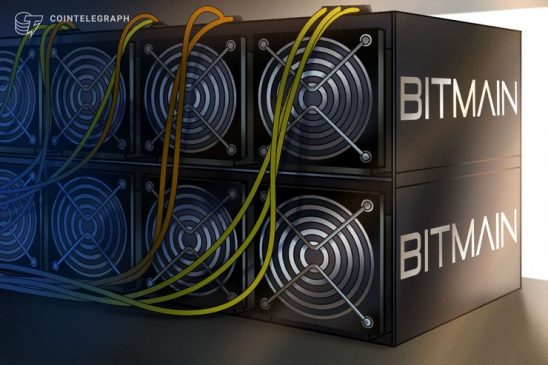Bitcoin (BTC) miners openly using AsicBoost are now comprising 63% of its network hashrate. This vindicates community concerns from 2017 that accused Bitmain of using the “covert” version of AsicBoost.
The statistic was highlighted on March 9 by Bitmex Research, building on a similar report from December 2018. Though the overt AsicBoost was only used by 30% of miners at the time, the analysts argued that the 2017 controversy was largely settled. They wrote:
“If covert AsicBoost was used by some miners to obtain a secret advantage, with significant adverse effects on Bitcoin, this problem now appears mostly solved.”
Bitmain was the target of strong criticism from notable Bitcoiners in 2017 after it allegedly introduced covert AsicBoost into its hardware. The company was also chastised for opposing the network’s Segregated Witness (SegWit) upgrade — a proposal which would have limited the usefulness of their covert AsicBoost tactics.
What is AsicBoost?
AsicBoost is the name of a technique developed by cryptography experts, Timo Hanke and Sergio Lerner. The solution was patented under a framework named “Blockchain Defensive Patent License,” which was specifically designed to limit competitive advantages in mining and preserve network security.
In a Proof of Work system, miners must generate a cryptographic hash of some important block information, which is contained in the block header. In order to make it a difficult task, the hash must satisfy the “difficulty” condition, which generally requires it to be lower than a certain number. Since hash functions are completely unpredictable, the only way to satisfy the condition is to simply try many different combinations of input data.
AsicBoost exploits the fact that Bitcoin block hashes are created from separate chunks of 64 bytes of data. Since the entire header is 80 bytes, there are two chunks that need to be hashed during the mining procedure.
Structure of a block header. Source: Bitmex Research
With the technique, one of the chunks can remain unmodified over multiple hashing attempts, which saves resources. The difference between overt and covert AsicBoost lies in which chunk is kept unchanged.
Under overt AsicBoost, the “version” bytes are used as an extra nonce to modify the resulting hash. Thus, the second chunk does not change for a number of attempts.
With covert AsicBoost, miners need to shuffle or even remove transactions in order to keep the last four bytes of the Merkle root — the signature of the block’s transactions — unchanged.
While the latter technique is less efficient, it is more difficult to detect and thus would allow a miner to maintain a competitive advantage. Crucially, the activation of SegWit would have broken the exploit.
Bitmain criticized for using covert AsicBoost
In April 2017, news broke that Bitmain had implemented the covert AsicBoost exploit in its hardware. The discovery was made by Gregory Maxwell, at the time CTO of Blockstream.
The findings were used by the community to allege that Jihan Wu — Bitmain CEO and strong SegWit critic — had ulterior motives for his position.
AsicBoost was estimated to increase mining performance by 20-30%. Andreas Antonopolous and others argued that covert AsicBoost would eventually destabilize the network, as some miners would have an unfair advantage.
Bitmain cleaning up
The ever-increasing figure of overt AsicBoost miners, currently at about 63%, means that the advantage of using it covertly is dwindling.
Even if there are fewer incentives of foul play now, in a conversation with Cointelegraph, Kristy Leigh-Minehan noted that Bitmain “cleaned up its act” in preparation for the initial public offering (IPO).
The initial plans of the 2018 IPO were thwarted by a protracted bear market. Though a new attempt in late 2019 was discovered, internal company issues prevented it from continuing.
The pressure from the Bitcoin halving has allegedly forced Bitmain to slash over 50% of its staff. Even though some may have hoped for a halving-induced rally, the already-significant cut may not be enough to sustain the company amid a global market panic just two months before the upcoming block reward decrease.




